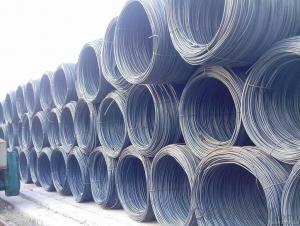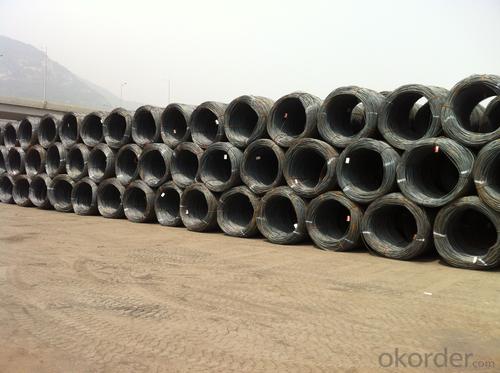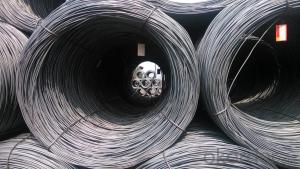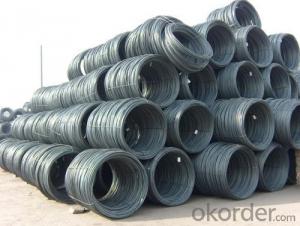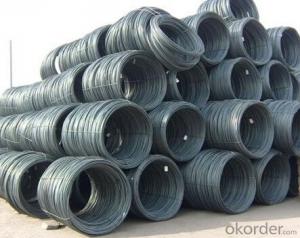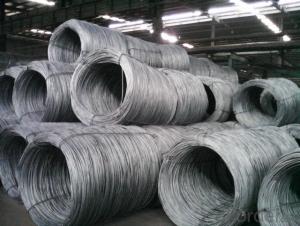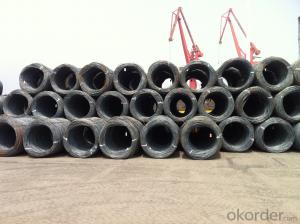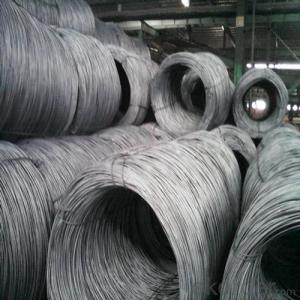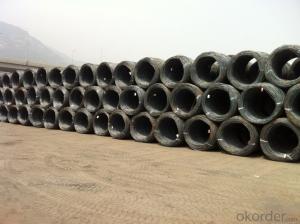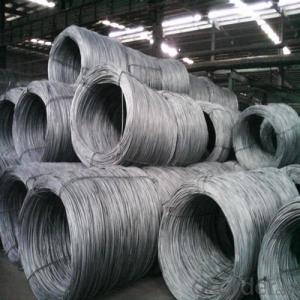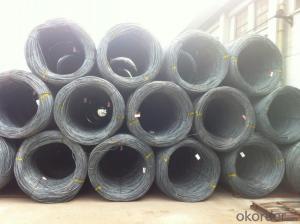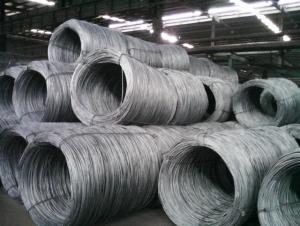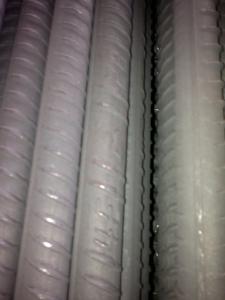Hot Rolled Steel Wire Rods with Grade ASTM SAE1008
- Loading Port:
- Tianjin
- Payment Terms:
- TT OR LC
- Min Order Qty:
- 25 m.t
- Supply Capability:
- 20000 m.t/month
OKorder Service Pledge
OKorder Financial Service
You Might Also Like
Specification
OKorder is offering Hot Rolled Carbon Steel Wire Rod 5.5mm with High Quality at great prices with worldwide shipping. Our supplier is a world-class manufacturer of steel, with our products utilized the world over. OKorder annually supplies products to European, North American and Asian markets. We provide quotations within 24 hours of receiving an inquiry and guarantee competitive prices.
Product Applications:
Hot Rolled Carbon Steel Wire Rod 5.5mm with High Quality is widely used in construction and manufacturing. Carbon steel wire rod is mainly used for reinforcement of reinforced concrete and welded structure or reprocessed (roberts , nail, etc.) materials, especially used to produce wire drawing, welding electrode, nails, spring, electronic, precise machinery parts and so on.
Product Advantages:
OKorder's Hot Rolled Carbon Steel Wire Rod 5.5mm with High Quality are durable, strong.packed and suitable for wire mesh,nail manufacture and construction
Main Product Features:
· Premium quality
· Prompt delivery & seaworthy packing (30 days after receiving deposit)
· Can be recycled and reused
· Mill test certification
· Professional Service
· Competitive pricing
Product Specifications:
Manufacture: Hot rolled
Grade: SAE1006 SAE1008 SAE1010 SAE1012 SAE1016 SAE1018
Certificates: ISO, SGS, BV, CIQ
Weight per Coil:2-2.05tons
Packaging: Export packing, packed by coil
Grade | Chemical Composition (%) | |||||
C | Mn | S | P | Si | B | |
SAE1006B | 0.03~O.07 | 0.32max | 0.045max | 0.040max | 0.30max | 0.0008min |
Mechanical properties | ||||||
Yield strength(N/mm2) | Tensile strength(N/mm2) | Elongation (%) | ||||
250-280 | 350-380 | ≥32 | ||||
Grade | Chemical Composition (%) | |||||
C | Mn | S | P | Si | B | |
SAE1008B | 0.10max | 0.3~0.50 | 0.050max | 0.040 max | 0.15max | 0.0008 min |
Mechanical properties | ||||||
Yield strength(N/mm2) | Tensile strength(N/mm2) | Elongation (%) | ||||
≥195 | 315-430 | ≥30 | ||||
FAQ:
Q1: Why buy Materials & Equipment from OKorder.com?
A1: All products offered byOKorder.com are carefully selected from China's most reliable manufacturing enterprises. Through its ISO certifications, OKorder.com adheres to the highest standards and a commitment to supply chain safety and customer satisfaction.
Q2: How do we guarantee the quality of our products?
A2: We have established an advanced quality management system which conducts strict quality tests at every step, from raw materials to the final product. At the same time, we provide extensive follow-up service assurances as required.
Q3: How many tons can be loaded into one 20ft container?
A3: Around 18—20tons,9-10 coils.
Image:
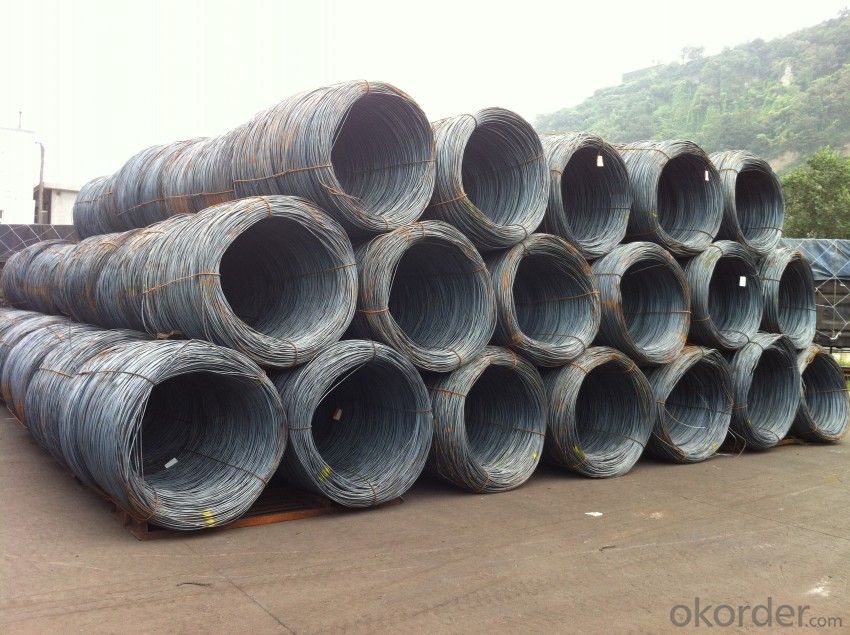
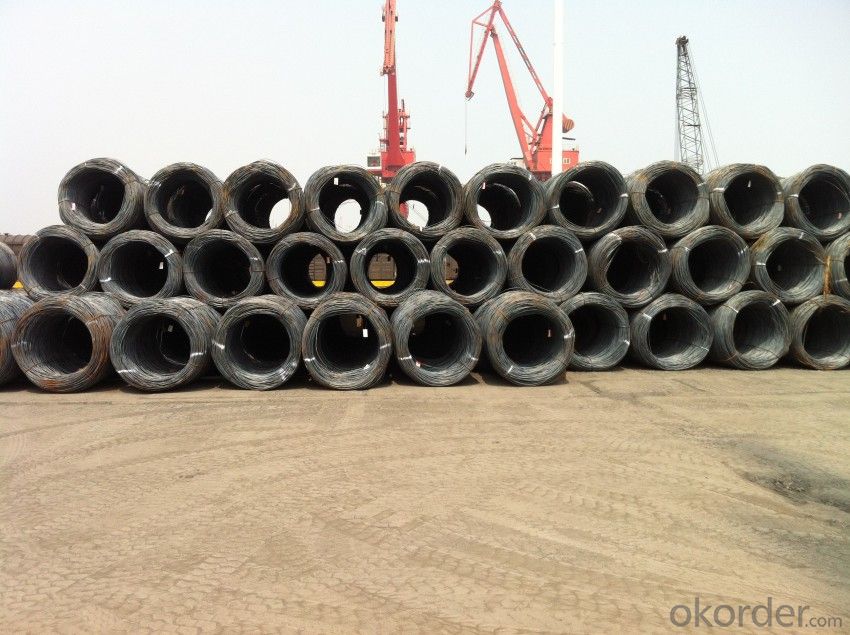
- Q: What are the different surface defects that can affect the fatigue life of steel wire rod?
- Some of the different surface defects that can affect the fatigue life of steel wire rod include scratches, pits, cracks, and local surface deformations. These defects can act as stress concentration points, leading to the initiation and propagation of fatigue cracks, thereby reducing the overall fatigue life of the wire rod.
- Q: What are the factors that affect the pricing of steel wire rod?
- Some factors that affect the pricing of steel wire rod include the cost of raw materials, such as iron ore and coal, as well as energy costs and transportation fees. Additionally, market demand and supply dynamics, global economic conditions, currency exchange rates, and government regulations also play a significant role in determining the pricing of steel wire rod.
- Q: How is steel wire rod classified based on carbon content?
- Steel wire rod is classified based on carbon content into three main categories: low carbon, medium carbon, and high carbon wire rods.
- Q: What are the common production processes for nickel-coated steel wire rod?
- The common production processes for nickel-coated steel wire rod include cleaning the steel wire rod, applying a nickel coating through electroplating or electroless plating, and then undergoing additional processes such as annealing, drawing, and polishing to achieve the desired properties and surface finish.
- Q: How is the dimensional accuracy of steel wire rod ensured?
- The dimensional accuracy of steel wire rod is ensured through rigorous quality control measures. This includes using precision equipment and techniques for measuring and monitoring the diameter, roundness, and surface finish of the wire rod. Regular inspections are conducted at various stages of the manufacturing process to identify any deviations from the specified dimensional tolerances. Additionally, proper maintenance and calibration of the production machinery play a critical role in ensuring consistent and accurate dimensions of the steel wire rod.
- Q: What are the different surface defects found in steel wire rod?
- Some of the common surface defects found in steel wire rods are scale, pits, scratches, cracks, and rust. Scale refers to the presence of a thin layer of oxide on the surface of the wire rod, which can affect its appearance and performance. Pits are small depressions or holes on the surface, usually caused by the presence of impurities or improper manufacturing processes. Scratches are visible marks on the surface, often caused during handling or transportation. Cracks are fractures in the material that can weaken the wire rod and compromise its structural integrity. Rust occurs when the steel wire rod is exposed to moisture or corrosive environments, resulting in the formation of iron oxide on the surface.
- Q: What are the different inclusion testing methods for steel wire rod?
- There are several different inclusion testing methods that are commonly used for steel wire rod. These methods are aimed at detecting and analyzing inclusions, which are non-metallic impurities that can impact the quality and performance of the wire rod. One commonly used method is the microscopic examination method. This involves taking a sample of the steel wire rod and preparing it for examination under a microscope. The sample is typically polished and etched to reveal the inclusions more clearly. The microscope allows for the identification and characterization of the inclusions based on their size, shape, and distribution. Another widely used inclusion testing method is the ultrasonic testing method. This technique utilizes high-frequency sound waves to detect and analyze the inclusions in the steel wire rod. The ultrasonic waves are transmitted through the material, and any disruptions caused by the inclusions are detected and analyzed. This method can provide information about the size, location, and type of inclusions present in the wire rod. In addition to these methods, there are also more advanced techniques available for inclusion testing. These include scanning electron microscopy (SEM), energy-dispersive X-ray spectroscopy (EDS), and X-ray diffraction (XRD). SEM allows for high-resolution imaging of the inclusions, while EDS can provide elemental analysis of the inclusions. XRD is used to determine the crystallographic structure of the inclusions. The choice of inclusion testing method depends on various factors such as the required level of accuracy, the specific type of inclusions of interest, and the available equipment and expertise. Each method has its advantages and limitations, and it is often beneficial to use a combination of techniques to obtain a comprehensive understanding of the inclusions in steel wire rod.
- Q: How is steel wire rod measured?
- Steel wire rod is typically measured by its diameter or gauge. The diameter of the rod is commonly measured using a micrometer or calipers, while the gauge refers to a standardized system that assigns a numerical value to the thickness of the wire.
- Q: How is steel wire rod used in the manufacturing of wire mesh fences?
- Steel wire rod is commonly used in the manufacturing of wire mesh fences as it serves as the primary material for creating the woven or welded wire mesh. The steel wire rod is first drawn into thin, long strands, which are then further processed to create different wire gauges and diameters. These wires are then woven or welded together to form the mesh pattern that makes up the fence. The steel wire rod provides the necessary strength and durability to withstand various external forces, ensuring a sturdy and secure wire mesh fence.
- Q: What is the composition of a steel wire rod?
- A steel wire rod is primarily composed of iron and carbon, with trace amounts of other elements such as manganese, silicon, and sulfur. The main component, iron, provides the strength and durability to the wire rod. Carbon is added to improve the hardness and tensile strength of the steel, making it suitable for various applications. Manganese enhances the overall strength and ductility of the wire rod, while silicon helps improve its resistance to corrosion. Sulfur is usually present in small quantities to improve the machinability of the steel during the manufacturing process. The specific composition of a steel wire rod may vary depending on the desired properties and intended use.
Send your message to us
Hot Rolled Steel Wire Rods with Grade ASTM SAE1008
- Loading Port:
- Tianjin
- Payment Terms:
- TT OR LC
- Min Order Qty:
- 25 m.t
- Supply Capability:
- 20000 m.t/month
OKorder Service Pledge
OKorder Financial Service
Similar products
Hot products
Hot Searches
Related keywords

